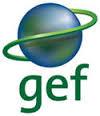Resource information
Land degradation – the reduction or loss of the productive potential of land – is a global challenge. Over 20% of the Earth’s vegetated surface is estimated to be degraded, affecting over 1.3 billion people, with an economic impact of up to US$10.6 trillion. Land degradation reduces agricultural productivity and increases the vulnerability of those areas already at risk of impacts from climate variability and change. Addressing land degradation, Sustainable Development Goal (SDG) target 15.3 and a key component of the 2030 Agenda for Sustainable Development, is essential to improve the livelihoods of those most affected, and to build resilience to safeguard against the most extreme effects of climate change. Smallholder farmers, women and indigenous communities are the most vulnerable, given their reliance on land-based resources, compounded by their exclusion from wider infrastructure and economic development. The Global Environment Facility (GEF)-funded project entitled “Strengthening Land Degradation Neutrality data and decision-making through free and open access platforms”, known as Tools 4 LDN, will combine tools, databases and expertise from leading organizations and universities researching best practices and approaches to eliminating land degradation. OUTCOME: The Tools 4 LDN Project will have four major outcomes: Increase resolution of datasets for monitoring land condition through Trends.Earth Improve the understanding of the interactionc between land degradation, drought, and socio-economic factors as they contrivute to the development of vulnerable communities. Develop approaches to support monitoring of LDN target progress integrating field data collection and remote sensing data at multiple scales. Build capacity on planning, monitoring, and reporting of LDN in support of the UNCCD reporting cycle. Timeline: The project activities will occur from September 2019-September 2021. OBJECTIVE To provide improved methods for assessing land degradation and understanding the socio-economic conditions of vulnerable communities in affected areas through the integration of free and open platforms to support country level reporting to the UNCCD Project Components Project Component 1: Improvement of land degradation biophysical indicators to support monitoring towards land degradation neutrality Project Component 2: Understanding the socio-environmental interactions between drought, land degradation, and poverty to support development of monitoring frameworks for UNCCD strategic objectives 2 and 3 Project Component 3: Support planning and monitoring of land degradation neutrality (LDN) priorities from field to national scales Project Component 4: Support UNCCD and its signatory countries by building capacity to support planning, monitoring, and reporting



